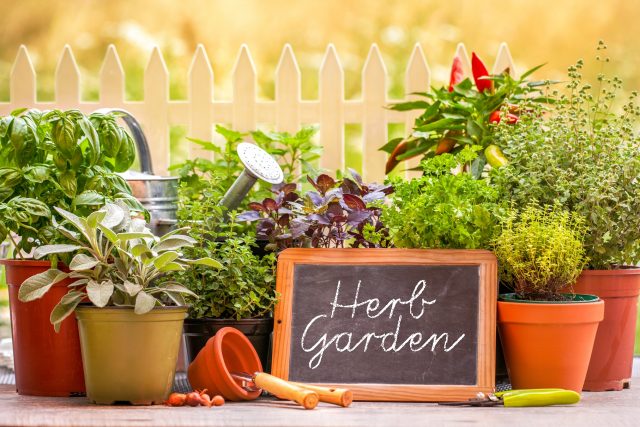How to Grow Herbs at Home
Defined as non-woody flowering plants in Botany, herbs are considered to be a gift of the Gods.
Herbs are known for their potent scent, flavor and medicinal properties. The fact that they can be grown without much fuss merits them a major chunk of space in a kitchen garden. You can grow herbs easily in containers or in beds, in a patch in your garden or on your windowsill, indoors or outdoors. Herbs are a gardener’s delight. Follow these easy guidelines for a lovely herb garden at home.
Where to plant: Herbs need about six hours of bright sunlight. So if you are planting them indoors, do it in containers and place them on windows where sunlight is bright and plenty. If your house does not get sufficient sunlight indoors, supplement with HID growth lights. Outdoor plants too need the same amount of sunlight.
What to plant: Choose the type of herbs you need to grow. Annual and biennial herbs like basil and coriander can be grown all year round. They grow fast and need to be sowed at regular intervals to ensure continued fresh supply. Perennial herbs like thyme and oregano are slow to grow but last for more than one season. You can choose the types based on space and your requirements.
 How to plant: Get the soil ready. It should be well drained and of good quality. Improve the quality by adding compost, animal manures and green waste. Dig about 10-12 inches into the soil and loosen it by turning it over several times. Remove stones and mix in organic matter. Water enough to keep the soil moist, plant the herbs and then level the soil.
How to plant: Get the soil ready. It should be well drained and of good quality. Improve the quality by adding compost, animal manures and green waste. Dig about 10-12 inches into the soil and loosen it by turning it over several times. Remove stones and mix in organic matter. Water enough to keep the soil moist, plant the herbs and then level the soil.
How to maintain: With herbs, maintenance is almost nil. Their natural fragrance acts as a repellant to pests. Indoor herb plants need a little more fertilizer and watering than plants grown outdoors. Add nutrients to the soil regularly, especially in the growing stages, with organic fertilizers.
How to harvest: Harvesting herbs is simpler than growing them. If it’s the leaves of the herb plant you need like coriander and mint, snip them before the plants flower. If it’s flowering herbs like lavender and chamomile, harvest before the flowers open fully. If it’s the seeds you need, like fennel and dill, do so when the seedpods change color.
How to store: Many herbs which are for short-term use can be stored in a glass of water. Some can be used for a week when stored in the fridge. For longer storage, dry them completely and store in air-tight containers. Freezing them is another option.
Cure common colds, get rid of insomnia and other ailments and enhance the flavor of your recipes with your homegrown herbs. You are sure to bask in the admiration of your loved ones!













































